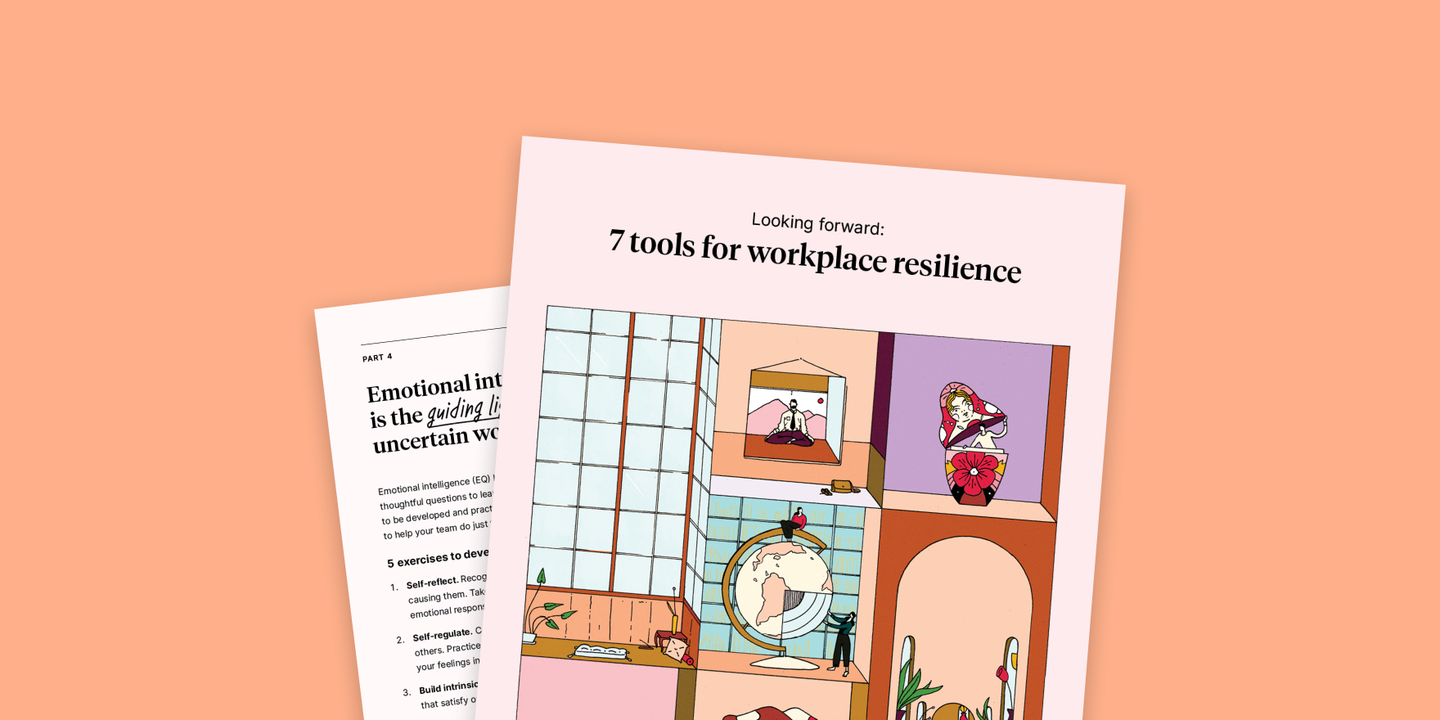Resilience in the workplace: The 4 skills your managers need

When your business faces tough times, periods of change, or major setbacks, for example, there are often many things that are out of your control. While challenges are inevitable, fixating on and worrying about the external factors you can’t control isn’t a productive way to spend your time. Instead, concentrate your efforts on things you can control, like making your workplace more resilient.
Remote work has blurred the boundaries between personal and professional and forced many of us to adopt a more human approach to business. By focusing on company culture and addressing employees' unique needs, many companies have helped their teams adapt to working in virtual, distributed environments.
Four top characteristics help build workplace resilience in the face of unexpected challenges and difficult situations. Our guide, "7 Tools for Workplace Resilience," provides the full list.
1. Wellbeing
In periods of uncertainty, it’s easy to let worry and anxiety consume you. Or, if you’re responsible for others like managers or parents are, you might feel obliged to put the needs of others ahead of your own. When this happens, though, you have to remind yourself of the adage, “You can’t pour from an empty cup.” To show up and give 100%, you have to find the time to put yourself first.
However, well-being looks different for every person, and as an HR team, you need to acknowledge that. For some people, focusing on their holistic wellness might be getting a good night’s sleep, going for a walk, meditating once a day, spending time with their kids, or taking a much-needed vacation. You need to figure out what your employees need and find a way to encourage them to make time for themselves. This might be through guided virtual yoga classes over Zoom, reimbursing their subscription to a meditation app, instituting company-wide health days, or allowing employees with caregiving responsibilities to work flexible hours.
2. Vulnerability
Being vulnerable is not easy. It requires building a culture of trust, one in which employees feel supported and valued. While this kind of culture and relationship can’t be built overnight, managers can be an integral part of this process. If they practice active listening, give employees an opportunity to voice their wants, needs, and concerns, and are vulnerable themselves, employees might be more forthcoming about their experiences.
When managers are transparent, even if they don’t have all the answers, they can help create a culture of openness and sharing. That said, managers also need to be encouraged to put themselves first at times. That might require setting boundaries and taking time to recharge and be the best leader for their teams.
As Meredith Haberfeld, Founder and CEO of ThinkHuman, put it, “Real leadership starts with giving ourselves permission to have our own humanity – to have compassion for ourselves, to not have it all tied up in a bow and looking good.”
3. Empathy
Managers need to understand what their direct reports are going through and act with humanity to coach their employees through tough situations. This small gesture helps them support their team through crisis, and to do that successfully, managers need to act with empathy.
Nowadays, managers have to support employees on non-traditional work topics like politics, race, layoffs, burnout, and more. By actively listening to their employees’ experiences and needs, managers can act with empathy to understand what they are going through and how best they can support their direct reports through trying times.
4. Communication
Communication is key, especially during periods of uncertainty. It’s important to ensure your team doesn’t feel alone in all the stress and turmoil. Your business needs to work together with managers to keep employees updated and to share key information as it becomes available. This will enable your business to fight misinformation with facts and build trust and deeper connections within your teams.
Workplace resilience can’t be built overnight. You need to help individuals at every level of your organization feel prepared for unexpected challenges, shifts in the business landscape, and questions about the future – a task easier said than done.
That’s why we’ve created our guide, “Looking forward: 7 tools for workplace resilience.” The guide shares the tools, templates, and ideas you need to get started on improving resilience among your teams.







